Hoe Many Beef Farms Are There in Minnesota
Animals
Animals have always been an important function of Minnesota agriculture. Withal, the breeds and types of animals that are raised have inverse over fourth dimension.
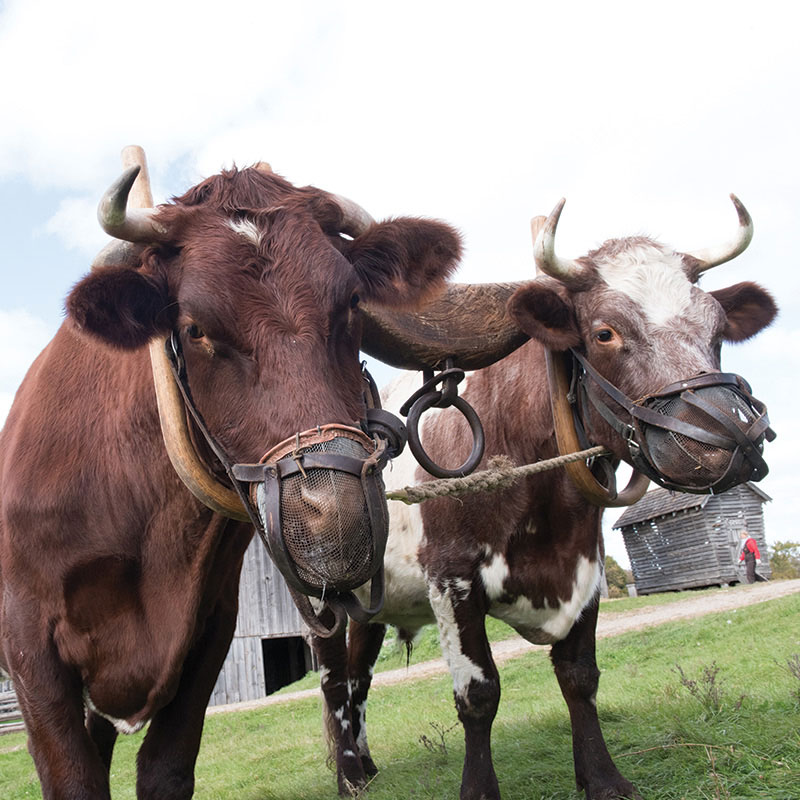
On the historic farmstead
Shorthorn Cattle were a common 19th-century brood. Bulls that have been neutered (steers) and trained to practice farmwork are called oxen. Young farmers would often train steer calves to piece of work in the fields for four years until they were fully grown. Oxen are very potent and like shooting fish in a barrel to take intendance of, simply they are very slow workers. Kelley eventually invested in horses instead because they could get more piece of work done, even though they were harder to intendance for.
Females that have had a infant are called cows. In the 19th century, farmers would milk cows past paw. Mostly, a family unit would but accept 1 dairy cow that could provide the household with plenty cream and milk. The milk was used for cooking and the cream for making butter. Any extra butter could be sold in town or to people coming to the subcontract for produce. Cows were also valuable (considering of their offspring and milk) to be used as oxen.
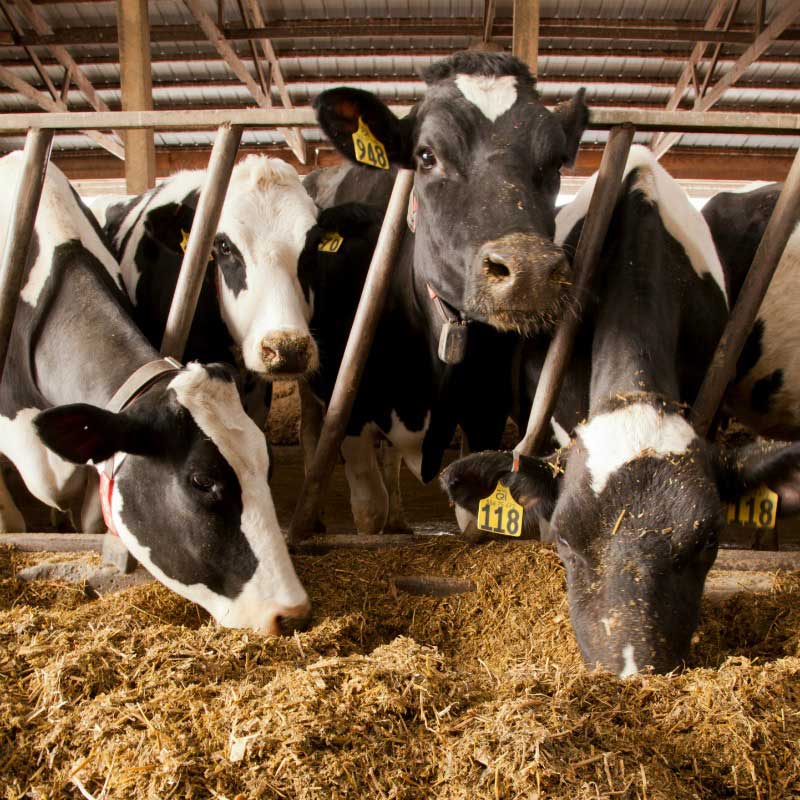
On modern farms
Modern cattle are raised for beef and dairy, rather than as working animals. Beef cattle and dairy cattle in Minnesota accept different lifecycles and are typically different breeds — bred specifically for one use.
Common beefiness cattle breeds include Angus and Hereford. Beef cattle spend most of their life grazing on pasture, so move to feedlots where they eat grain for 4-vi months prior to slaughter.
The almost common breed of dairy cattle is Holstein; these are the blackness and white cows you probably picture show when you think of a moo-cow. Many dairy farmers raise their dairy cattle in open-sided "freestall" barns where cows eat, beverage, sleep and move around as they like. Milking is washed with machines in a carve up parlor. Milk is cooled, tested for condom and quality, and pasteurized before information technology makes it to the shop.
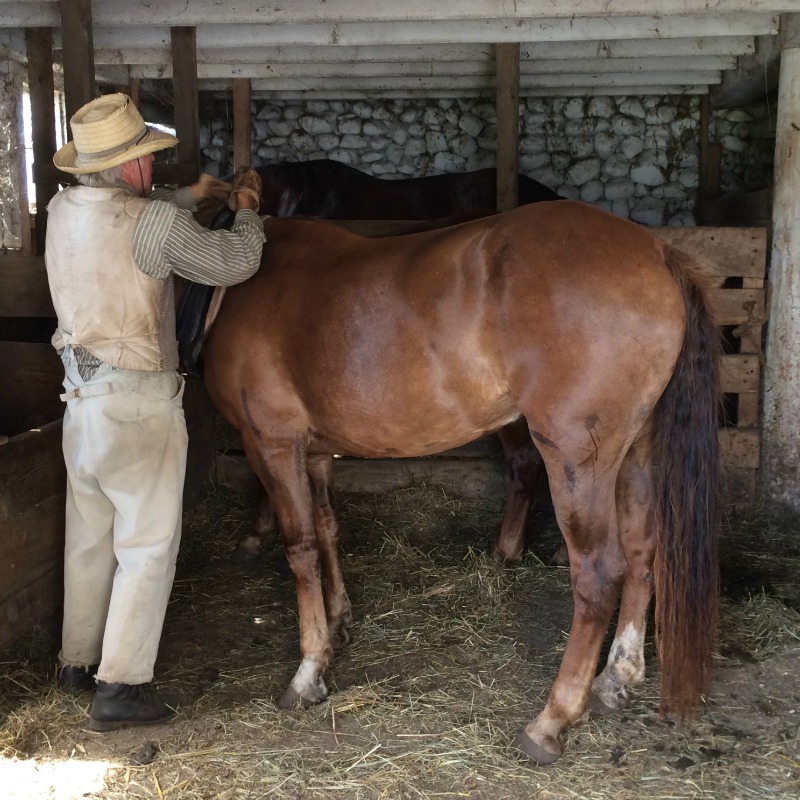
On the historic farmstead
"Market farmers," who were trying to make a profit from farming, started selling oxen and investing in horses in the mid-19th century. Horses were faster, more nimble, better in mud, and able to work individually, instead of in teams. Farmers also did non have to walk aslope them, and instead rode on the farm equipment and controlled the horses with reins. Horses and the harnesses they needed were very expensive, merely Kelley believed the increased farm yields would pay off the investment in a brusque period of time.
Horses were mostly piece of work animals trained to pull and power equipment and were not used for recreational riding. This is notwithstanding true for the Historic Farmstead horses.
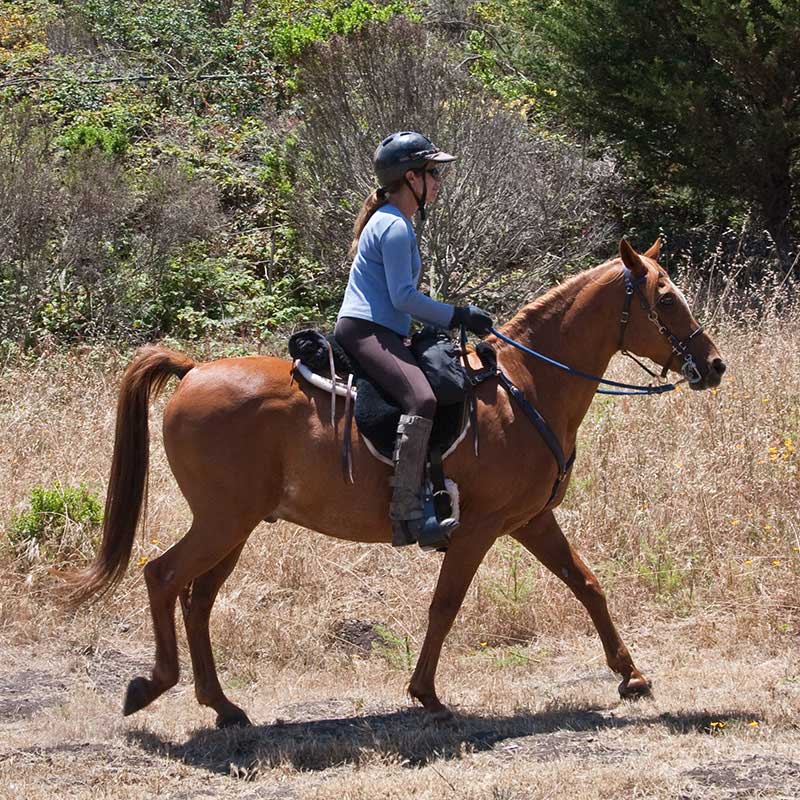
On modern farms
With the rise of mechanized equipment such equally tractors came the turn down of horses used for power. Farmers with tractors could work more effectively and efficiently, and didn't need to worry virtually the health and intendance of working animals. Betwixt WWI and WWII virtually farmers made the switch. Today, horses are raised primarily for recreation and entertainment, from driving competitions to racing. In 2012, 66,384 horses were raised in Minnesota.
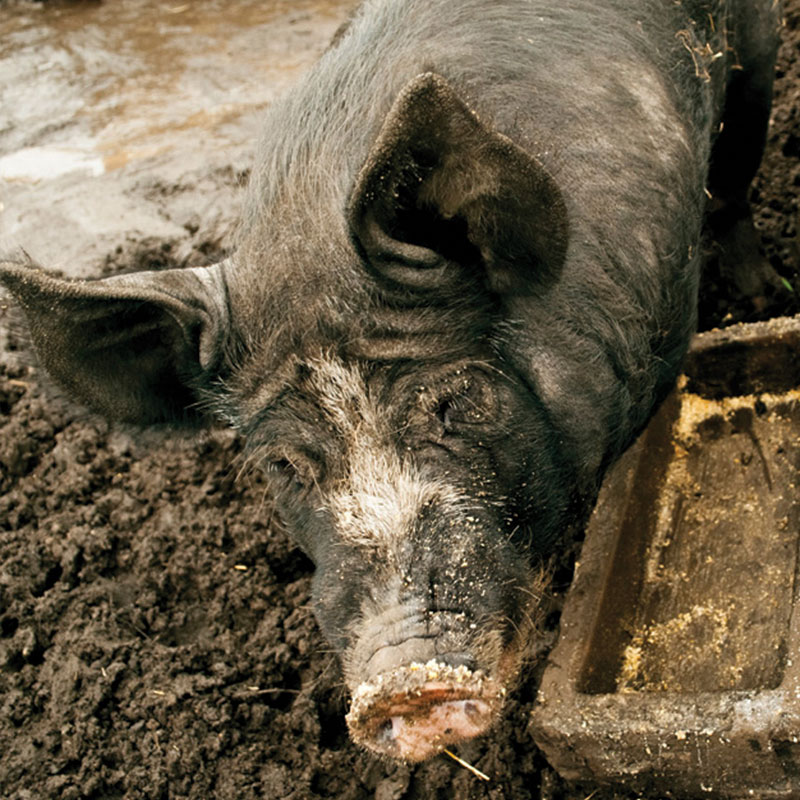
Hogs, pigs, and swine are interchangeable terms
On the historic farmstead
Near farmers in Oliver Kelley's day would let their native pigs roam and fodder in the forest for food. It took 3-iv years for these pigs to reach slaughter weight of 300 pounds. Unlike his neighbors, Kelley kept his pigs in pens then that he could control their feeding and breeding. The Historic Farmstead has Berkshire hogs, a pop breed in the 1800s for those who could afford it, known for their lard and flavorful meat.
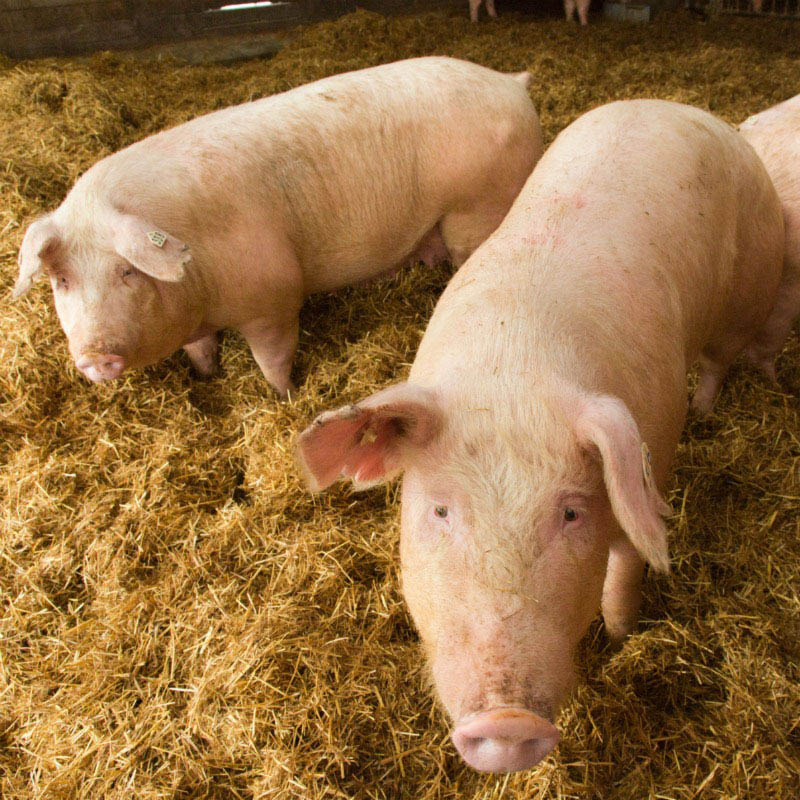
On modern farms
There are 3,300 pig farms in Minnesota, and Minnesota ranks second in the U.s.a. in number of pigs raised. 2 mutual breeds raised today are American Landrace and American Yorkshire. Many farmers besides raise crossbreeds. Well-nigh modernistic hogs live in climate-controlled barns where feeding, healthcare, and manure management are carefully regulated. Pigs are typically slaughtered at around six months of age, at which signal they typically weigh 250-300 pounds.
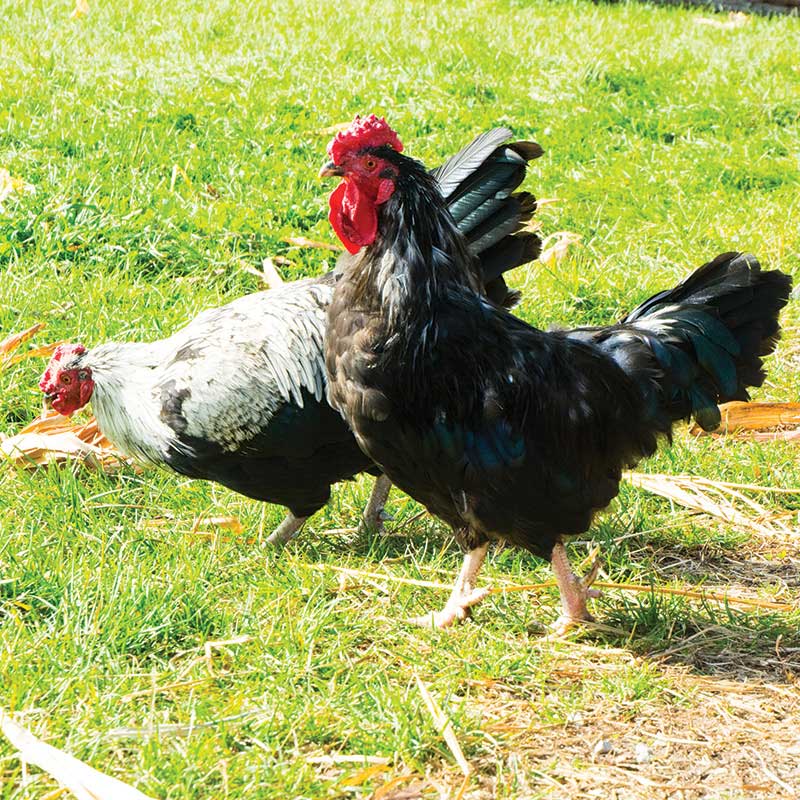
On the historic farmstead
The Silver-Gray Dorking and Dominque breeds on the Celebrated Farmstead today were common breeds in the 19th century. Chickens provided both meat and eggs for farmers in Kelley's 24-hour interval. On a Yankee farm, the women were traditionally responsible for the chickens' care. Most families only had enough to supply their immediate family, but the Kelleys kept upwards to 200 chickens and sold their meat and eggs correct off the farm to neighbors. Due to limited daylight, however, the hens would stop laying eggs in the winter.
Though some farm families raised a few turkeys in the 1800s, the industry wasn't commercialized until the 1940s in Minnesota. You lot might spot wild turkeys in the fields or sitting on fences down on the Historic Farmstead.
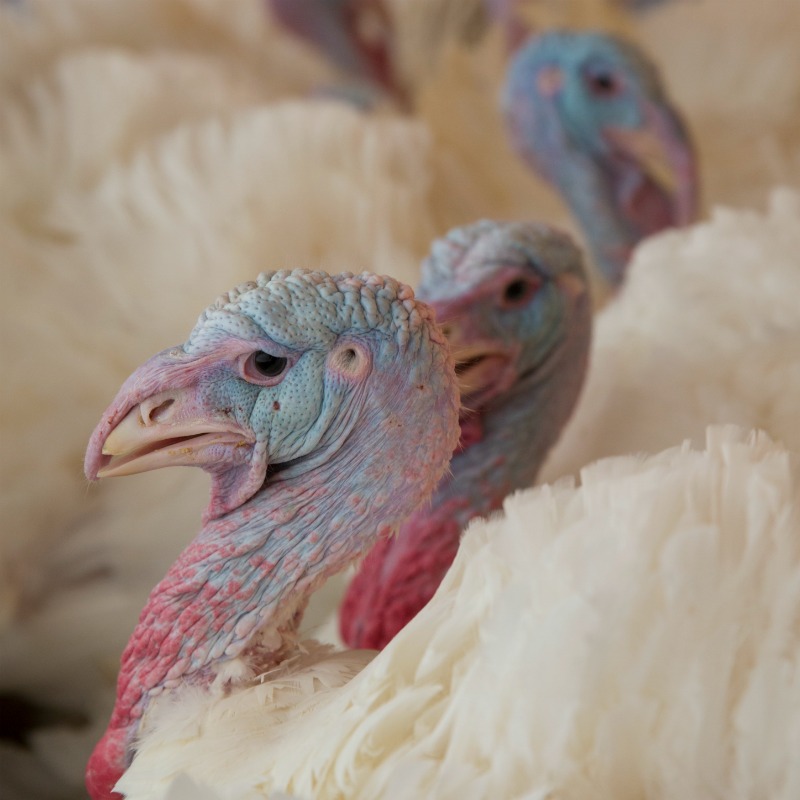
On modern farms
Minnesota is a top producer of eggs and meat chickens, and is the number one turkey-producing state in the United States. Poultry raised today are typically hybrid breeds, selected over time for increased production and efficient growth. Modern production farms tend to specialize in one type of poultry and i lifecycle phase.
Many farmers that raise turkeys or chickens for meat (called broilers) start off with poults or chicks that are inside 12 hours of hatching. They then raise these poults or chicks inside climate-controlled barns with food rationed specifically to best supply the birds equally they historic period and grow. Thanks to years of selective breeding and to careful management, farmers are able to enhance poultry to a slaughter size chop-chop and efficiently. Turkeys can reach attain 35-42 pounds in 16-19 weeks, and broiler chickens can accomplish 5 pounds in 5 weeks.
There are approximately 10.iv one thousand thousand egg-laying hens in Minnesota, which produce almost 2.9 billion eggs per twelvemonth. Hens are kept in layer houses where they are given fourteen-16 hours of light daily to stimulate egg production. Eggs are automatically nerveless daily on belts and rollers and move into an egg processing room. At that place the eggs are washed, graded, sorted past size, and packaged past machine.

On the celebrated farmstead
Oliver Kelley thought that the local climate would exist bang-up for raising sheep for their wool and meat. He talked about the importance of improving the local Southdown and Merino sheep breeds in the area. The farmstead has Southdown sheep and is trying to breed them back to the 19th-century coloring of black heads and legs. In Kelley's twenty-four hour period Southdown sheep did not take wool on their heads; this is a modern trait.
Farmers sheared their sheep every jump and shipped the fleece to market. Farmers produced more wool during the Ceremonious War when there was a demand for wool for soldiers' uniforms.
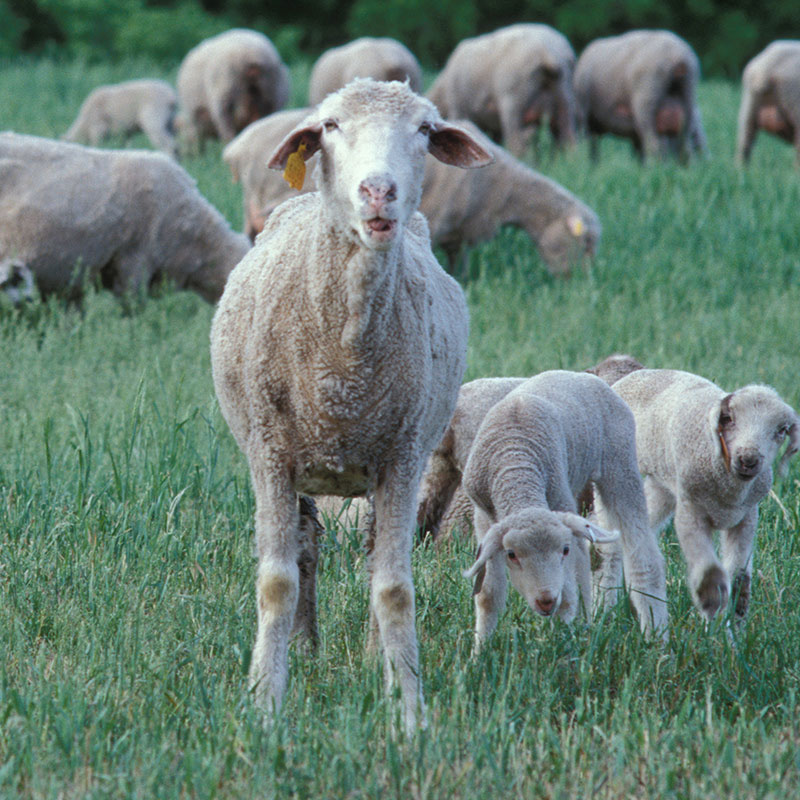
On modern farms
Sheep numbers in the Usa peaked at 56 meg head in 1945 and accept been in decline always since, with 5.32 million head in 2016. In 2016, MN raised 125,000 sheep, putting u.s. 12th in the United States in number of sheep raised. Sheep in the The states are raised differently according to geographic location, with large sheep ranches establish west of the Mississippi River and smaller, pasture-based operations in the eastern part of the state. Due to changing consumer demands, the industry has also moved from an emphasis on wool production to an accent on meat production.
Source: https://www.mnhs.org/kelleyfarm/learn/animals
0 Response to "Hoe Many Beef Farms Are There in Minnesota"
Post a Comment